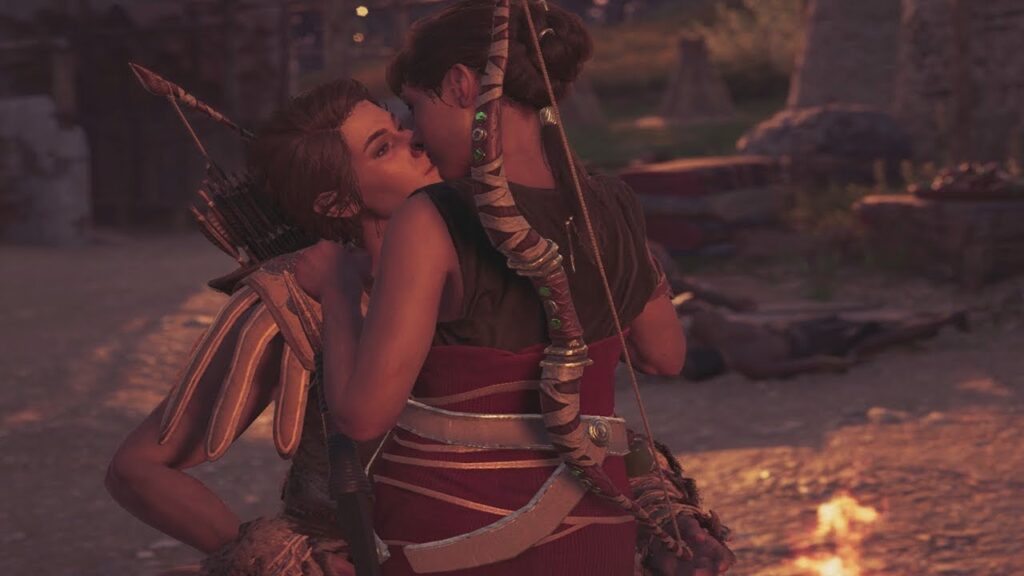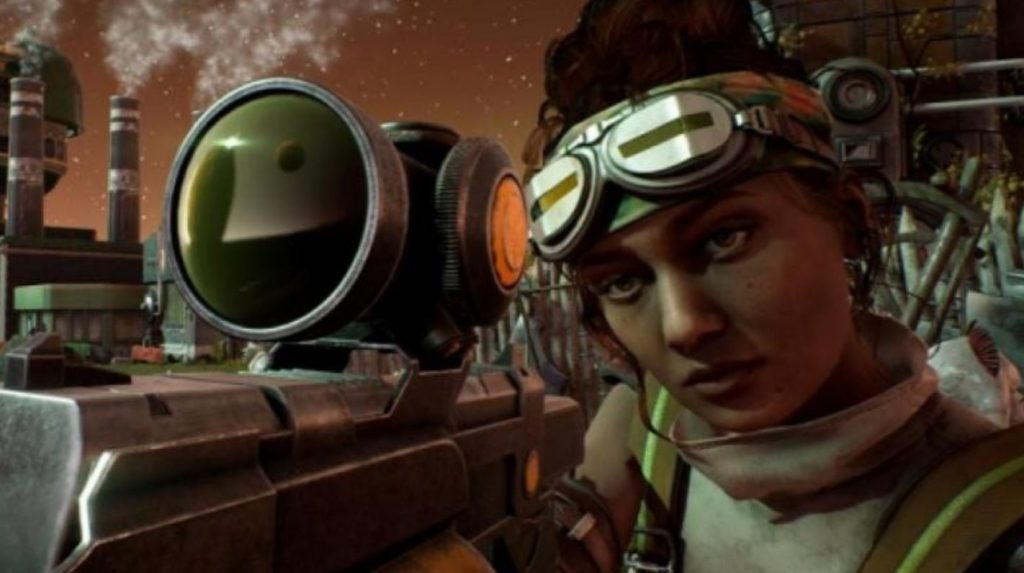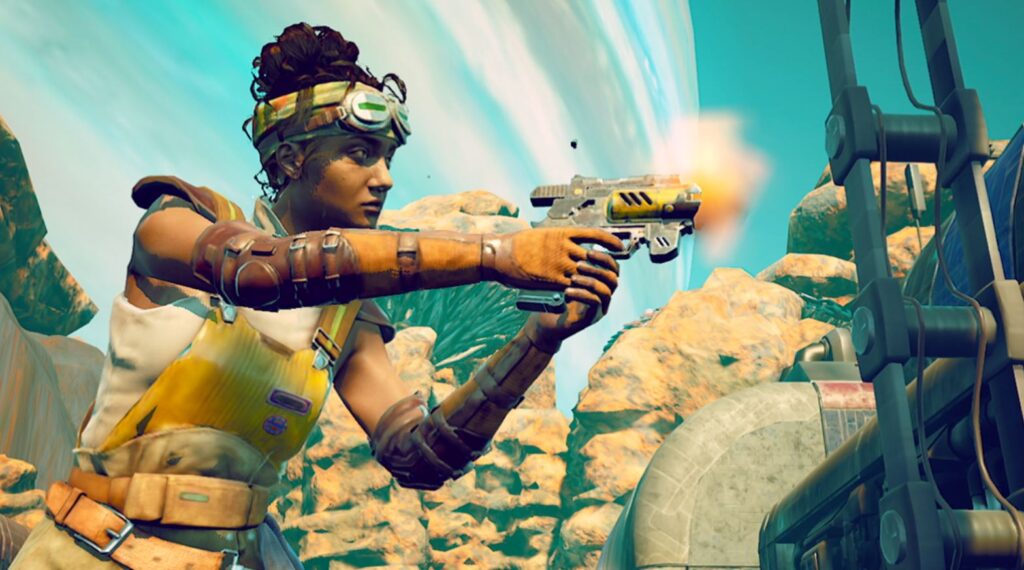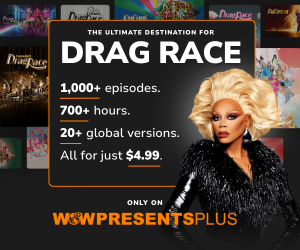Video games are still falling behind with asexual representation
Finding an asexual character in video games, even now in 2021, is a bit like finding a D20 which rolls critical successes all the time. How many confirmed ace characters in gaming can you name? Far fewer than you can name bisexual characters like Jacob Frye from Assassin’s Creed or Zagreus from Hades.
In a time where the gaming industry has been increasing its representation, from indie darlings such as Yes, Your Grace to AAA Game of the Year nominees like The Last of Us Part II, there is still a distinct lack of asexuals (or ace, for short) characters out there.
Tabletop RPG Dungeons and Dragons has always allowed its players to explore worlds as anyone they want to be – with romance and sex entirely up to the player. I have played many different characters in D&D, both with and without a romance, and many well-rounded asexual characters, too. It isn’t just me either, beloved campaigns such as Critical Role now feature asexual characters among its cast. Interestingly, Caduceus’ player Taliesin Jaffe had portrayed him as such since the furbolg’s introduction in 2018. Did this revelation take away from Caduceus? Of course not. He still remained the Grave Cleric we all know and adore. Of course a tabletop game like Dungeons and Dragons requires stronger player input, as they are the one deciding the arc of their own character(s) as opposed to an official character. So, while the representation is there in your own world, it doesn’t hold the same spotlight as it would in a renowned video game.
Another reason why asexuality is so important to include in video games is to get its true meaning across. For example, asexuality does not mean the person is aromantic; Parvati in The Outer Worlds displayed this perfectly through her companion quest. Parvati never feels one dimensional, that asexuality was everything about her character – she is multi-faceted and a great option for a companion for players to recruit. Having an asexual person involved with the writing and development of characters with their sexuality provides a more well-rounded result, with the experiences being able to positively influence. Being able to relate on such a fundamental level makes them feel real and not one-dimensional. They feel like a real person, a character we can get to know and like, someone you are more likely to have an emotional connection with than a faceless NPC.
But before we even get to having more asexual characters, we must also consider games themselves. For example, quest ‘rewards.’ All too often games position sex – particularly one-night stands – as a reward for completing a mission. In The Witcher 3: Wild Hunt, many of the side romance quests with Syanna, Madam Sasha or Keira to name but a few, all end with sex. In Assassin’s Creed Odyssey, generally, any dialogue option to romance ends with a “fade to black” moment if chosen by the player.

Just think for a moment about what that is telling players, that societal “expectation” of a date almost being required to end in sex. From personal experiences, it’s a damaging thought and can do more harm than good in the long run in terms of people coming to terms with their sexuality, and with any future partners.
Odyssey even has quests liked the “Family Values” sidequest where you physically cannot continue unless you pick the romance/sex option. And none of this goes into the backlash Ubisoft had with the release on the Legend of the First Blade DLC where players were forced into a heteronormative romance – after the game earned such praise in allowing players to explore as a gay or bisexual character.
Assassin’s Creed Valhalla has somewhat pulled it back for Ubisoft, with romance and sexual encounters each listed as a separate dialogue prompt. It’s a level of respect and accessibility which is understated in the middle of the franchise, and it made me go out of my way to woo Randvi rather than try to avoid romantic encounters like I did throughout Odyssey. It felt more comfortable to approach and engage with.
So which games have taken a better route with their romance options, and what could we learn from them?
Life is Strange, and the optional romance you can undertake between protagonist Max Caufield and Chloe Price feels genuine and cute and I pick it every time because it’s just adorable. While neither of the characters are asexual, the romance itself could be read as an asexual partnership, and I think that’s a great blueprint for what an ace romance could look like.
Some of my other favourite video game romances (like Evie Frye and Henry Green from Assassin’s Creed: Syndicate) have no sexual content implied, and that’s beautiful and refreshing. Hades and its options to romance either Megara or Thanatos likewise builds around genuine experiences and getting to know them as people, rather than getting them into bed. These more human interactions have me yearning to replay and engage, and nothing would change that drastically if the main character or significant other was asexual. What’s their favourite music? Best spot for a quiet read with a book? Hobbies and pets?
Representation for asexuality is growing; not fast enough but it is. In other mediums, YA novels like the Heroes of Olympus and shows like Sex Education make ace characters seem normal to audiences and integrated into everyday life. Sex Education’s Florence even gets the opportunity to speak the word “asexual” on screen, and that episode remains a tearjerker for that reason. There is so little media out there with it so explicitly stated, and to have it spoken aloud on-screen brings the conversation about asexuality to the forefront.

Growing up only to have the fictional headcanons of long-published characters like Katniss Everdeen from The Hunger Games to relate to meant that coming out was a difficult conversation. There was so much to explain, and I ended up having to use the Greek Goddess Artemis as my example so people could vaguely understand. Being able to have characters in a medium where we can interact with them allows for a greater deal of understanding. Not only for people coming to terms with their own sexuality, but by being able to say “I’m like X or Y” is able to reduce stigma and myths around asexuality as it is no longer this unknown element.
Being able to see and interact with these confirmed ace characters can help in the long run with how we can talk to and interact with people in everyday life who also identify as asexual. A character on paper is a different interaction entirely to one that talks and walks and acts. You can relate easier to a character in a film or a video game, being able to perceive a wider range of emotion through idle animation, details around a room or filler conversation during a quest.
Confirming a character’s sexuality off-screen or out of the narrative is all said and good, but I want to see it. I was to feel the rush of adrenaline of hearing the word spoken as if it were normal and as respected as we respect people’s astrological sign or favourite Frye Twin. The positive impact this could have on the representation of an orientation which does not see much in the way of discussion or conversation, would be monumental. Forging pathways and instigating conversations we have not seen in the video gaming world – and barely out of it.
Likewise, a great romance arc does not need to be full of sex either – some of the best gaming romances don’t include a glimpse of it on screen, and if fanfiction taught me anything it’s that platonic bed-sharing is a trope that is so darn good and wholesome.
It is 2021, game developers: asexual people exist, and we deserve well-rounded loveable characters in video games. If we can explore far off worlds and reverse time and other bewildering concepts, it is not that difficult to have a confirmed asexual character in your title.








Comments are closed.